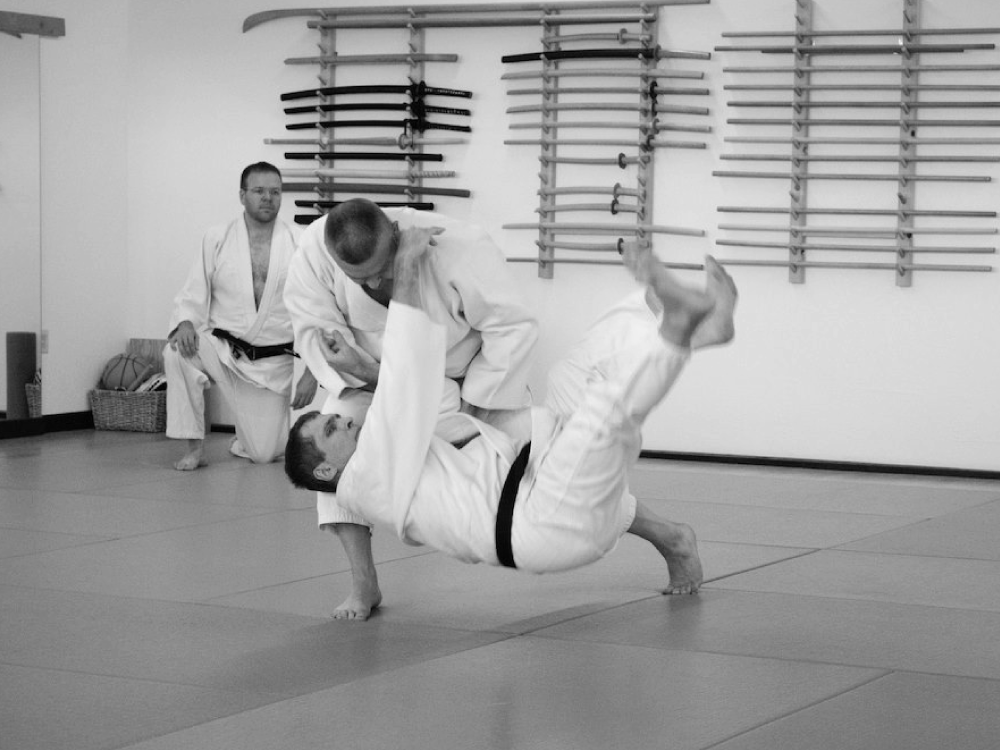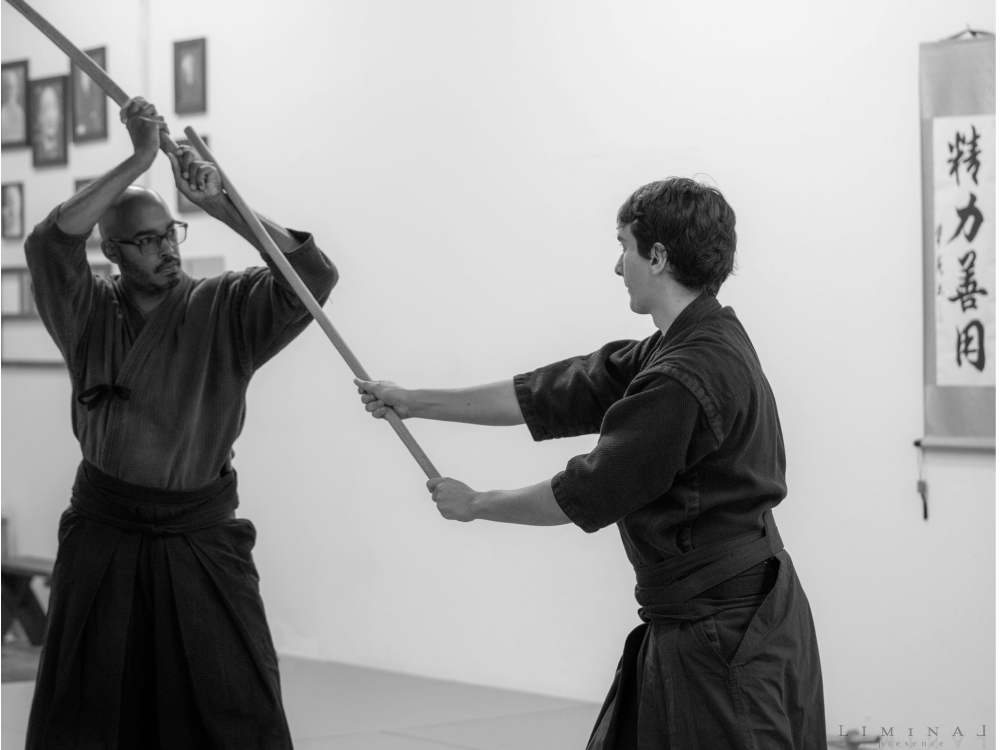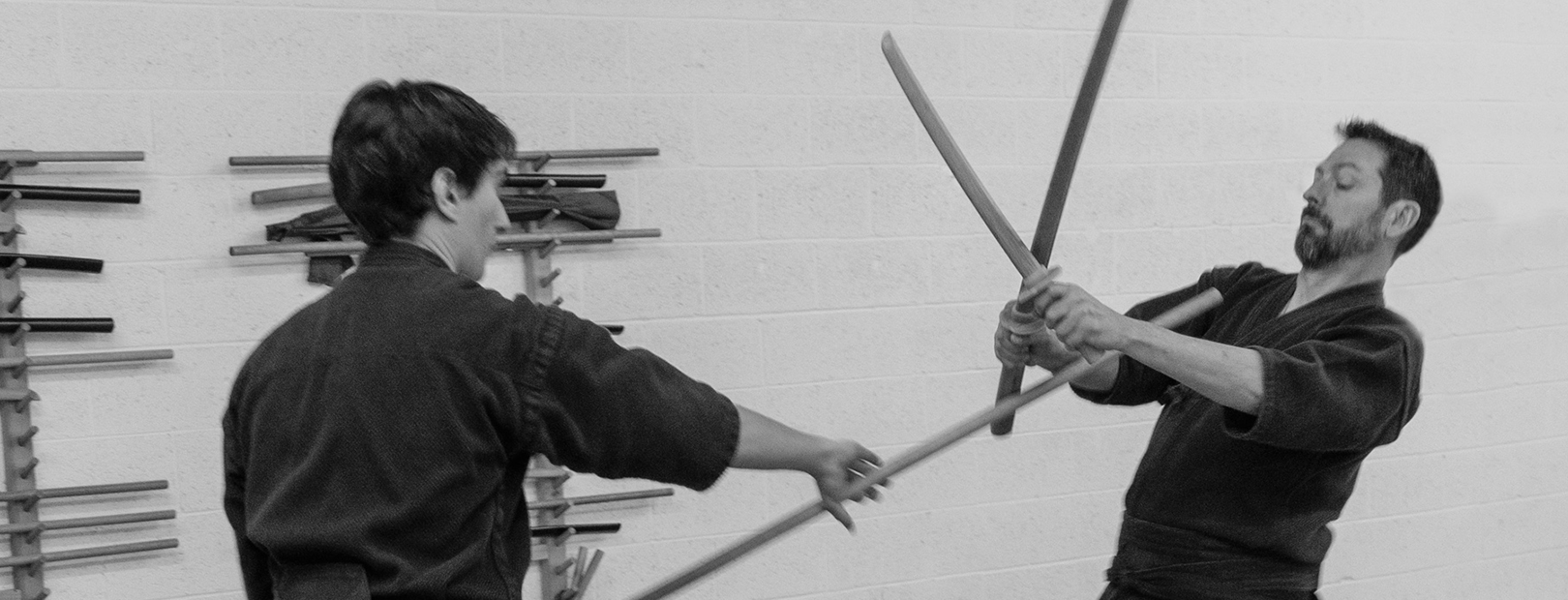The Renshinkan is a Jiyushinkai dojo in Mesa, Arizona. We teach both classical and modern Japanese martial arts using modern educational methods. These arts include Jiyushin-ryu AikiBudo—which comprises a variety of throws, joint locks, chokes, strikes, kicks, groundwork, and weaponry—and Shinto Muso-ryu Jo, said to be the oldest Japanese style of using a short staff in combat.
We do not take part in tournaments or competitions of any sort. Nor are we a commercial dojo in the normal sense; we are more like a family. As such, we tend to have somewhat strict guidelines for entrance.
Our dojo follows Kano Jigoro’s maxims 精力善用 seiryoku zen’yo [best use of energy] and 自他共栄 jita kyoei [mutual welfare]. In other words, we want our relationship to be mutually beneficial. We will teach you as much as we can, but the practice is yours and you are responsible for chasing after your training. As you learn and become more senior in the dojo, your responsibilities to act as a model for your juniors will naturally increase.
We do not do contracts of any sort. You are free to cease training at any time, should you decide to. We just ask that you let us know.
If you are looking for MMA, a gym workout, or more acrobatic, showy performance-oriented activities, we are likely not the right place for you. If, on the other hand, you want to learn self defense in the form of a traditional Japanese martial art, while improving your balance, proprioception, awareness, self-discipline, and self-confidence, we might be a fit.
About Jiyushinkai
Jiyushinkai is an independent Budo group with roots in the teaching methods of Kano Jigoro, Mifune Kyuzo, Ueshiba Morihei, Tomiki Kenji, Ohba Hideo, Nishioka Tsuneo, and Miyake Tsunako sensei. Jiyushinkai senior students are motivated to teach the less experienced how to stand on the shoulders of their teachers, as the saying goes. We all have much to learn from each other.
For more information on Jiyushinkai, please see our organization’s official website: Jiyushinkai.org.
What We Teach

Jiyushin-ryu Aikibudo is a synthesis of Ueshiba Morihei’s Aikido and Kano Jigoro’s Judo as transmitted by Tomiki Kenji through our teacher, Chuck Clark. Aikibudo, as practiced in the Jiyushinkai, stresses systematic explanation and understanding of principle along with the practice of fundamentals in paired kata and then the application of these basics in randori. Note that although we descend from Tomiki Kenji sensei, we do not engage in competitions, although our practice is as live and real as we can make it.

Shinto Muso-ryu Jodo is a 400+ year old civilian/police martial art and is said to be the oldest style for using a stick (jo) in combat in Japan. Founded in the early 17th century by Muso Gonnosuke Katsuyoshi, an exponent of Tenshinsho-den Katori Shinto-ryu, the jo is a staff-like weapon which is thinner and shorter than a bo (50 1/4″ x 7/8″) which allows for more rapid manipulation and incorporates elements of the bo, ken and yari (staff, sword and spear).
Aiki Koryu no Kata are sets of techniques preserved by Tomiki Kenji sensei from the old school Daito-ryu AIkijujutsu as taught to him by Ueshiba Morihei. Many of them have their own “personality” and are good tests of a student’s mastery of the fundamentals. Unfortunately, many Aikido systems have discarded these techniques or condensed several different, but similar-looking, techniques into one category, resulting in a loss of knowledge. These techniques involve a variety of attacks, weapons, and techniques; we have preserved the old school Aikijujutsu techniques to the best of our ability.
Ukemi is the art of the receiving body. Students learn to condition and use their bodies in particular ways to safely receive and dissipate force applied against it. Learning to fall and roll safely enables spirited training in a safe manner in addition to teaching students a number of other valuable skills such as how to relax and release (i.e., not push back against force) and, ultimately, how to reverse techniques. Whether falling as a result of a punch, a throw, a tackle, a bike accident, or just tripping while walking around, gravity is constantly trying to reintroduce us to the planet; ukemi is one of the most useful, valuable elements of our practice with everyday real-life implications.
The Aiki Weapons taught at the Renshinkan include Aiki Ken (sword), Aiki Jo (staff), and Tanto (knife) are designed to complement Aiki training and teach such principles as target, distance, timing, hasuji (cutting lines/vectors), and an awareness of the reality of what we call “force multipliers.” These arts are completely separate from Shinto Muso-ryu Jo
Ground Techniques are a vital part of any martial arts system. Just because a person has fallen down, that doesn’t mean the exchange is over. Often, the person thrown will pull the person who threw them down on top of themselves. Sometimes, people get tackled or otherwise taken to the ground. Such is life. Our system of newaza is founded on Kodokan Newaza techniques and principles as informed by our Aiki practice.
Self Defense, as we teach it in the Renshinkan, involves using Aiki principles against non-traditional attacks that one might be more likely to experience in real life. Students are taught to defend themselves against chokes, headlocks, various boxing-style punches, and kicks (consequently, we also teach how to do chokes, headlocks, boxing-style punches, and kicks). Self Defense, however, is more than just a set of techniques used to defend yourself and others; there is much more to it than merely extricating oneself from danger with physical skills.
Jiyushin Randori consists of one (or more) person attacking with strong intent; if the answering technique is not successful, then countering techniques are made by each person until a technique happens that can not be countered. This practice is initially done in slow motion with both partners keeping the original rhythm and pace. Excessive force and speed must not be the deciding factors in the success of the techniques. Large, fast, and strong people should not rely on these assets because there is always someone bigger, faster, and stronger.









